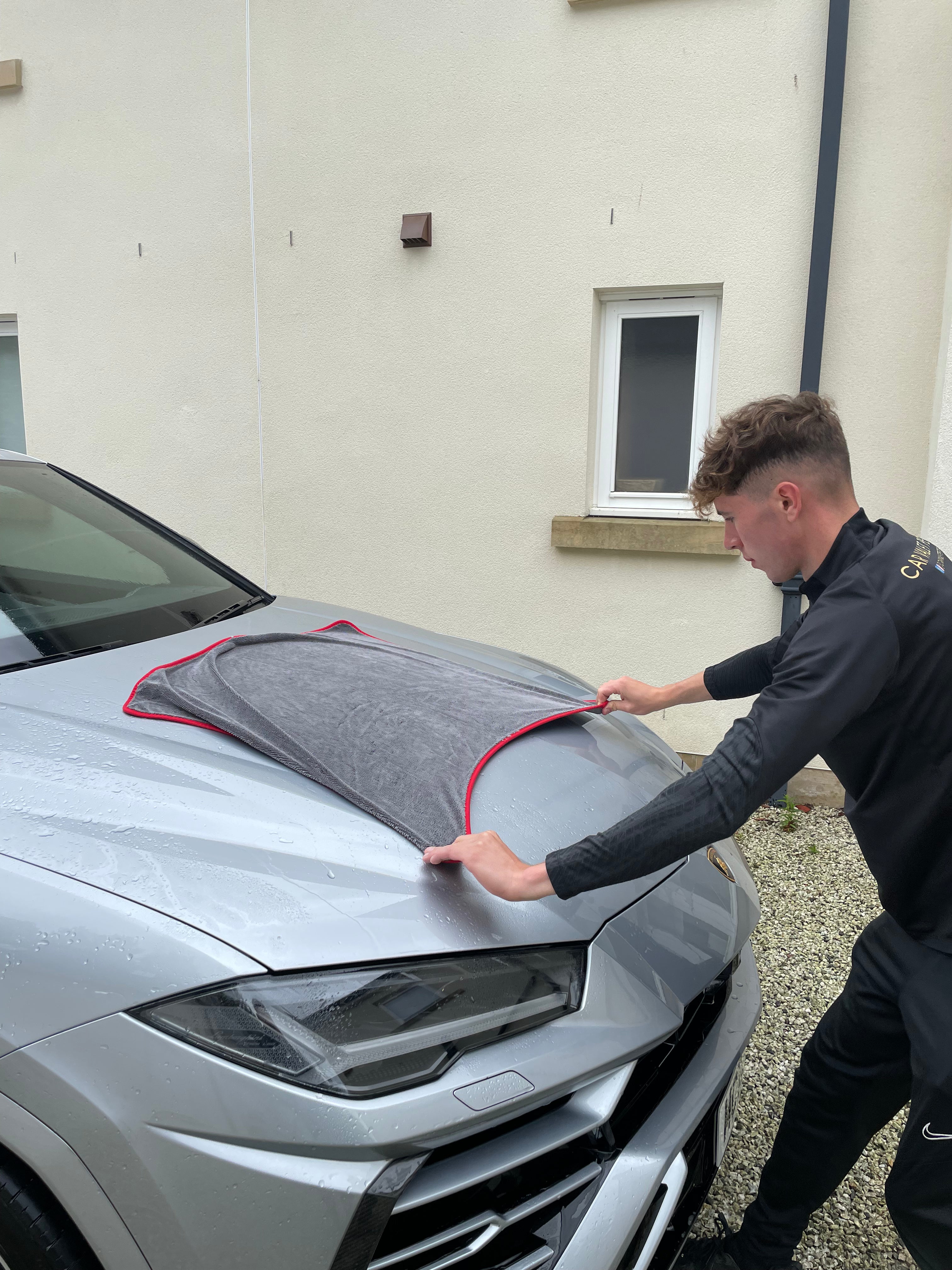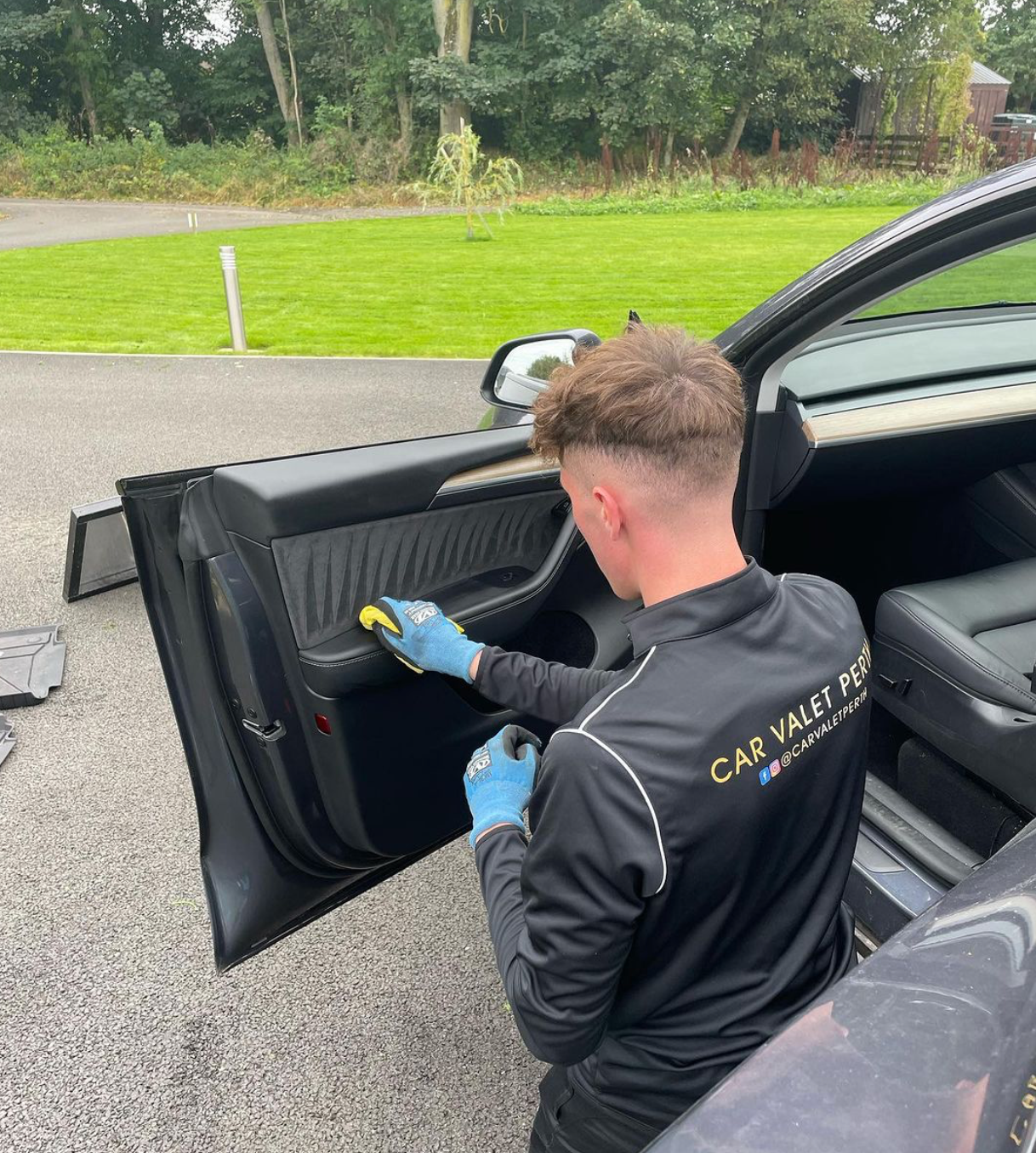
What is Car Detailing?
Many car owners may have heard of the word “detailing” but most can’t pin down exactly what it means and how it works.
Car detailing at a very basic level is making a vehicle look as close to “brand new” as possible and even in some cases, “better than new”. However, that doesn’t really even scratch the surface of what actually goes into the detailing process.
The main goal of detailing is to improve the condition of the interior and exterior surfaces, thus preventing deterioration and to improve the visual appearance. This of course starts with a proper clean. Detailing goes a step further than washing and valeting in terms of how thorough the clean is and how it is performed.
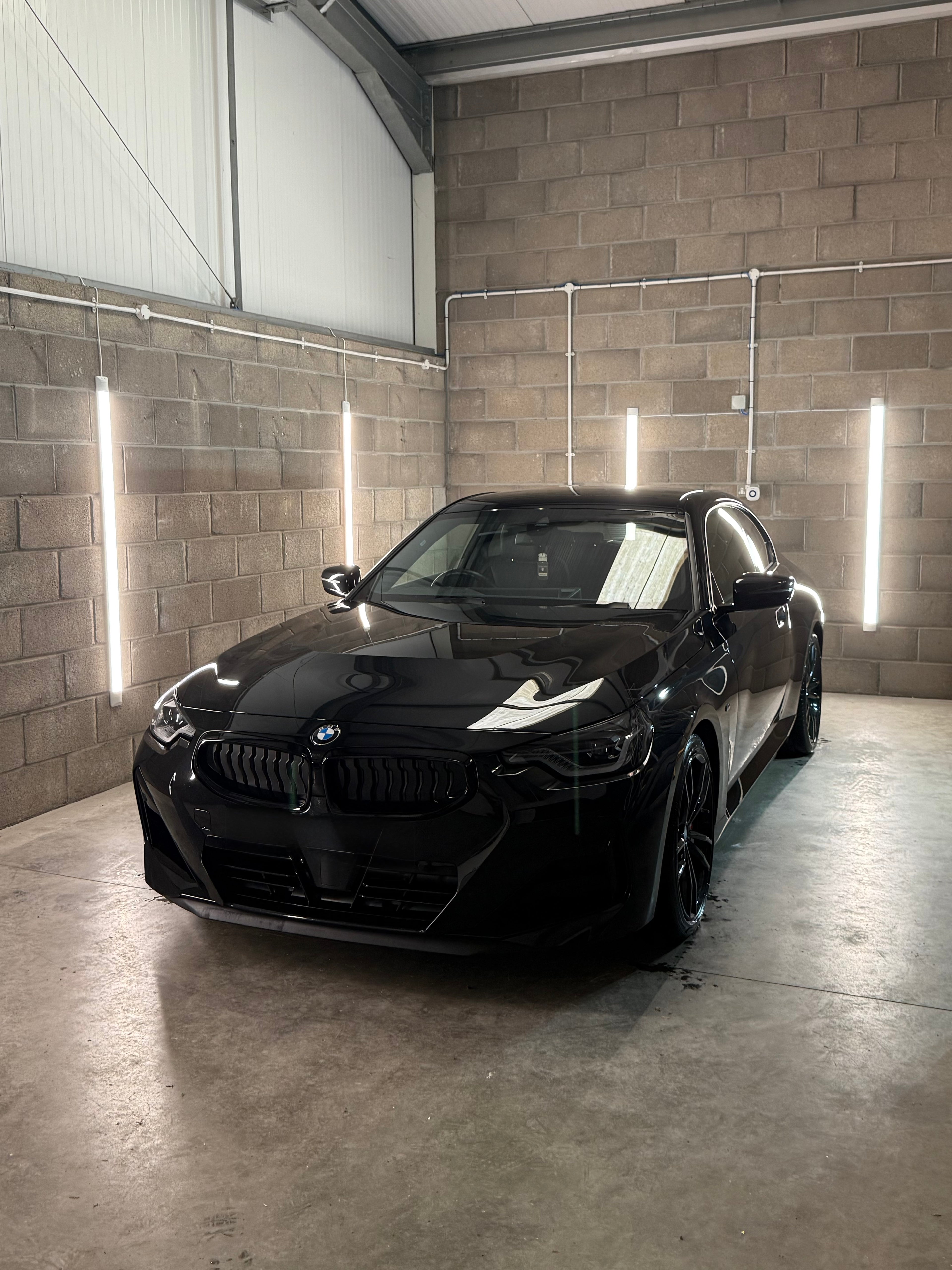
The Exterior
Many car owners use sponges and brushes to clean their cars and are not aware the damage that this causes to the paintwork. Abrasive tools used by "cheap car washes", such as sponges and poor quality brushes, cause micro-scratches in the clear coat which is the top layer in the paint. The dirt and grit that builds up on the paint also acts as an abrasive when wiped along the paint during the wash process.
These clear coat scratches visible in direct sunlight when they often look like swirls or spiderwebs in the paintwork. This makes the paint look terrible as well as causing the finish to look duller as they affect the way that light reflects off the paintwork.
Detailing a car is a very safe and thorough clean of all the surfaces.
We take extra care to avoid the risk of these scratching and swirl marks to help preserve the clear coat.
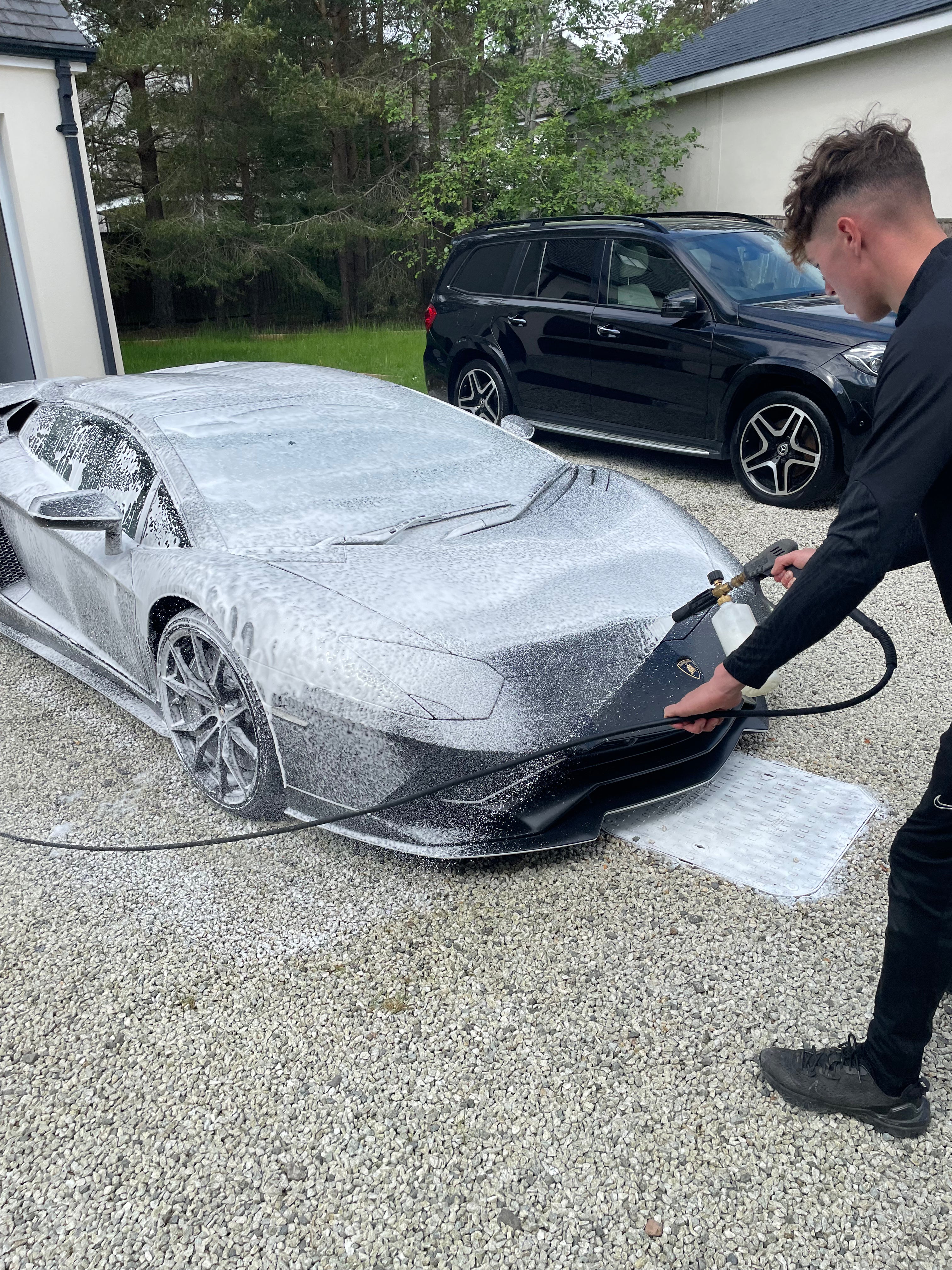
Our Process
The car is thoroughly pre-washed,using a snow foam to remove as much dirt as possible without touching the paintwork.
High quality car shampoos are used to gently clean the exterior using a wash mitt, instead of a sponge.
Two buckets are used, one for the shampoo, and another for the rinse water. The mitt is frequently rinsed in the water bucket before being dipped back into the shampoo bucket to remove any dirt or grit.
The wheels and paintwork are washed separately using different tools and buckets to make sure to avoid any cross-contamination which would increase the risk of scratches.
New Microfibre towels are used to dry the paintwork following the wash process as these do not inflict clear coat damage like bath towels or water blades can.
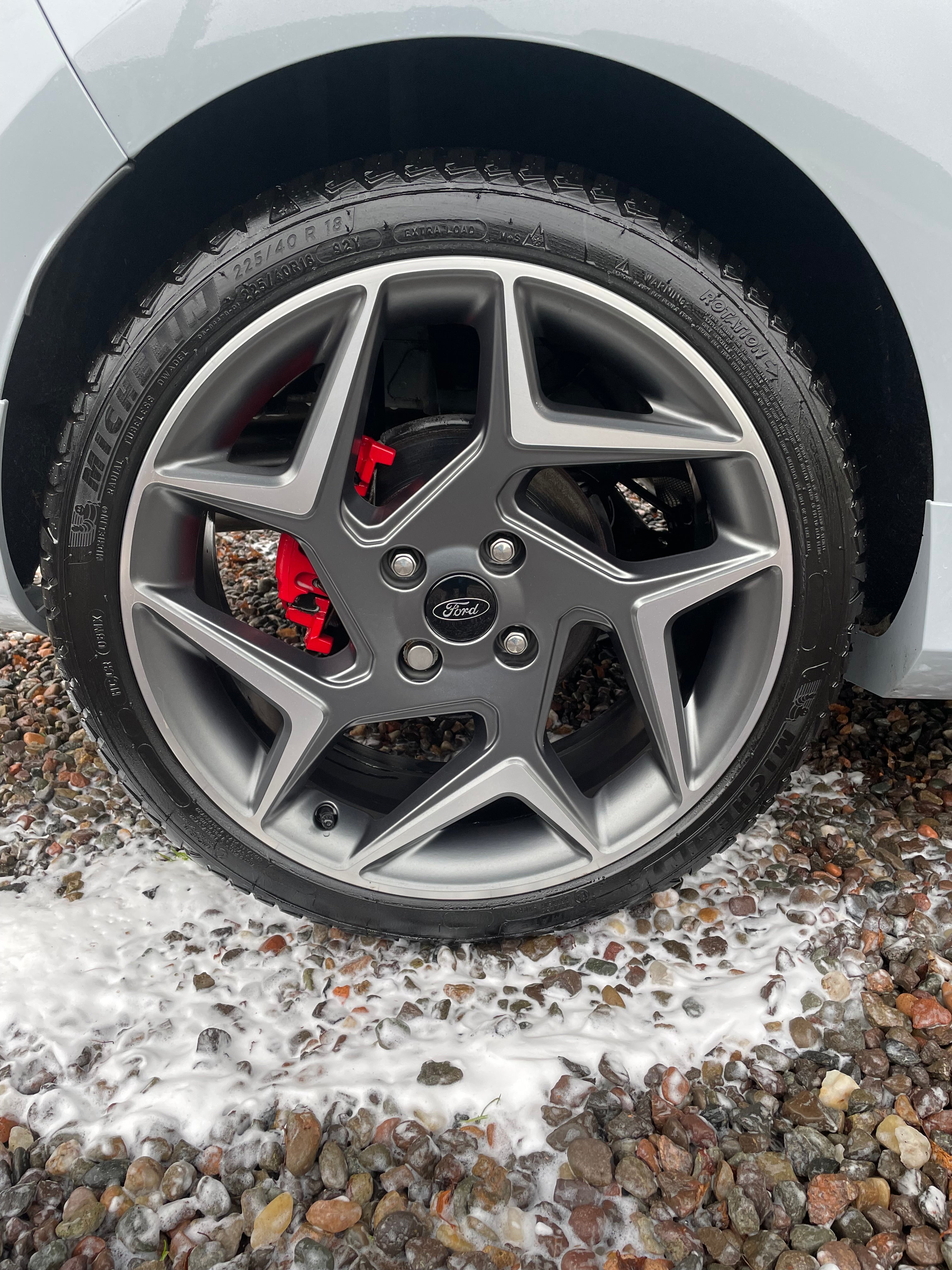
Decontamination
As well as making sure the dirt and grime is removed from the vehicle’s exterior in a safe manner to preserve the paintwork, an extra step is also included called “decontamination”.
If you’ve ever ran your hand over your car’s paint and realised it feels rough then you’re actually feeling “contaminants”. These are things that stick to the car’s paintwork and cannot be removed by routine washing
These may include:
- Water spots
- Iron fallout
- Road tar
- Tree sap
Contaminants build up on the car’s exterior and need to be removed to ensure the surfaces feel smooth and look cleaner.
How can we fix this? We can carry out a full paint decontamination. This will allow your paint to look cleaner and feel smoother. This is included as part of our Full Detail and Exterior Detail
There are two types of decontamination: chemical and physical.
Chemical decontamination removes tar and iron fallout using chemical sprays.
Physical decontamination involves using automotive clay to remove any remaining bound contaminants. The result is a completely smooth surface
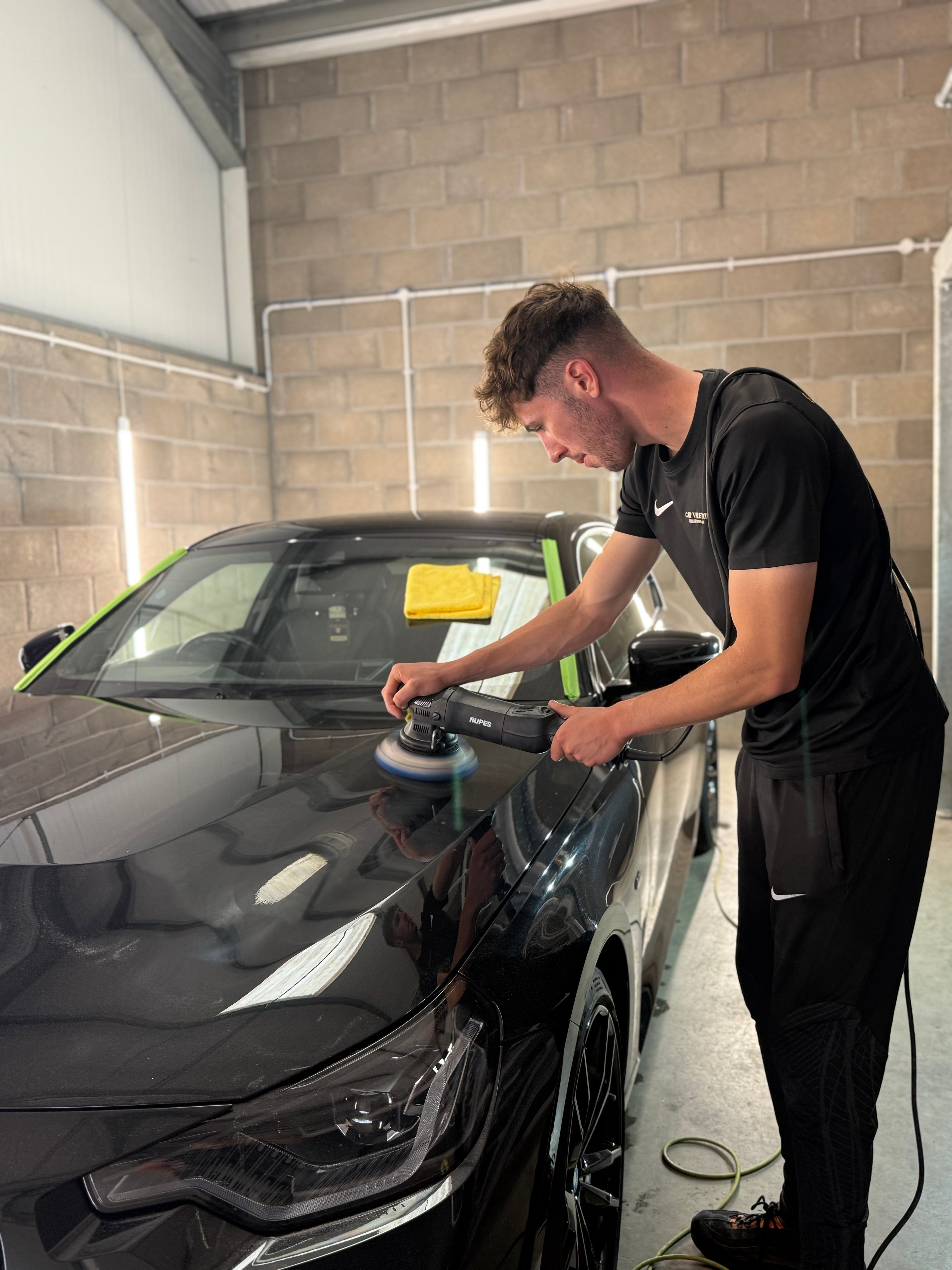
Enhancement & Correction
Detailing also includes restorative processes, which predominantly apply to the paintwork, however, can also include other areas such as the exhaust pipes, badges, exterior plastics and trim.
Detailing does not always completely eliminate any defects which prevent the vehicle from looking brand new, and it does not deal with major defects such as deep scratches or dents which would require a trip to the body shop. The overall aim is to refine, rather than completely repair, in order to improve the vehicle’s appearance.
As previously mentioned, most cars have some clear coat scratches caused by improper wash techniques. Even if you’ve purchased a brand-new car, it’s likely that it will still have some swirl marks as unfortunately, most dealerships do not take enough care when washing the vehicle.
Detailing can improve the appearance of the clear coat in order to make it look much glossier, by correcting or enhancing the paintwork.
- Compounding: this technique is used to remove moderate clear coat scratches. The process is not as abrasive as wet-sanding, however, can sometimes lead to low-levels of hazing.
- Polishing: this is designed to refine the paintwork following compounding. The aim is to get the clear coat as flat as possible to improve the gloss levels.

Protection
This is where everything really ties together. Once the car has been thoroughly cleaned, decontaminated and the finish enhanced, it needs to be properly protected.
All areas of the interior and exterior can be protected in some form:
- The paint can be protected using a wax, sealant or coating.
- The glass can also be sealed or coated.
- The exterior trim and the tires can be dressed to both improve the visual appearance and to protect them.
- The interior leather, plastics and fabrics can be protected to shield against UV rays, spillages and stains.
Arguably the most important area of the car to protect, is the paintwork. Applying a layer of paint protection helps to:
- Keep the car cleaner as dirt and contaminants are less likely to stick to the surface.
- Provide a water-repellent coating to reduce the risk of water spots.
- Paint work shielded from UV rays which can cause fading over-time.
- Enhance the gloss and shine.
There are three main choices when it comes to paint protection: waxes, sealants and ceramic coatings.
Waxes typically offer the least amount of durability, but are the most straight-forward to apply. Sealants offer a step-up in terms of longevity. Finally, ceramic coatings offer the most recent development in paint protection technology, providing a tough layer of protection which lasts for several years.
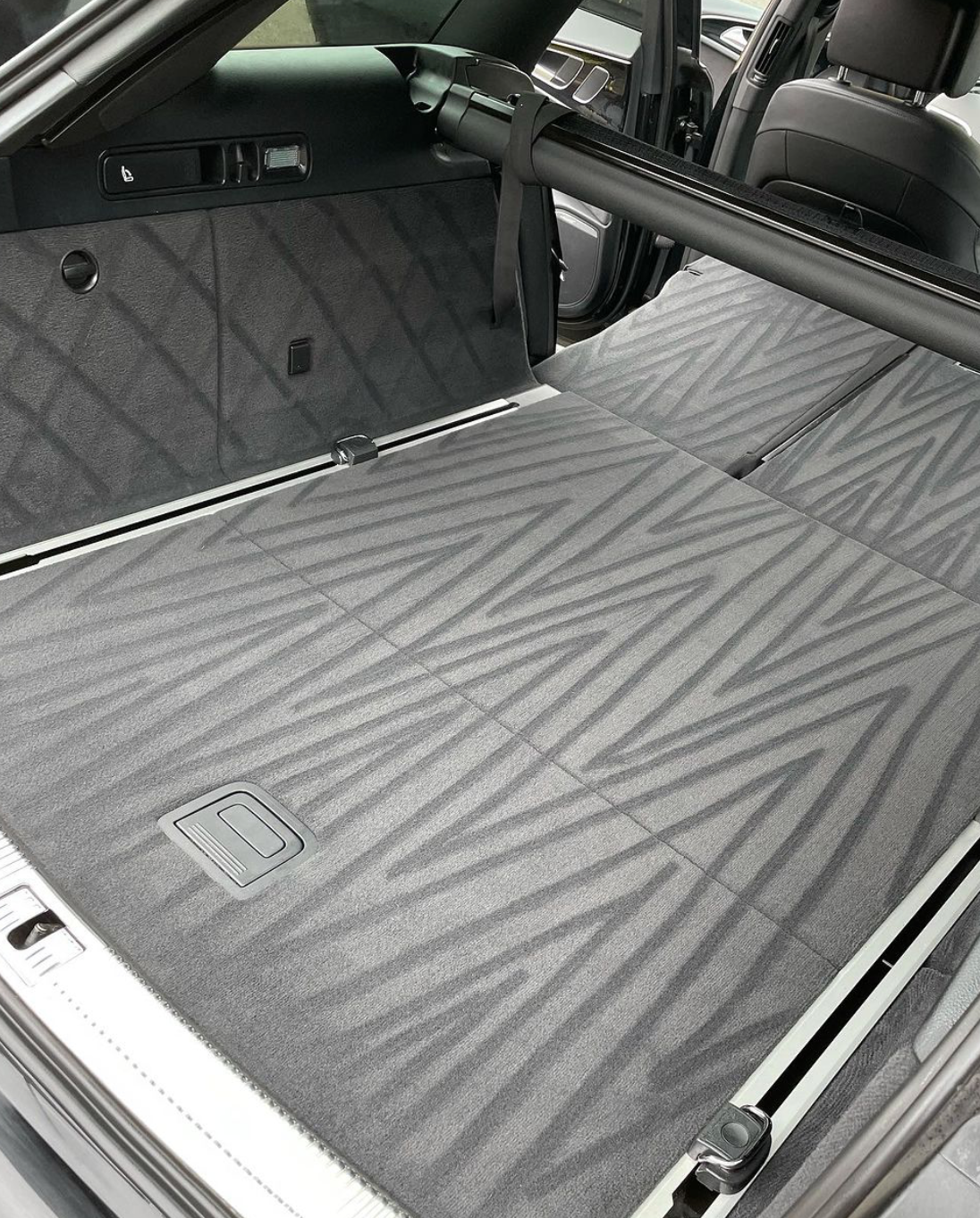
The Interior
By choosing us to detail your vehicles interior we are not just carrying out a "quick clean" or "mini valet", it's an art form that requires precision, care and an understanding of the vehicle's unique surfaces. While mini valets and quick hoovers may focus on the visible surfaces, detailing delves deep into intricate details, ensuring that every aspect of your car, from the dashboard buttons to the seat seams, receives the attention it deserves. We take our detailing service seriously to ensure that every nook and cranny of your car's interior receives the attention it deserves.
One size does not fit all when it comes to car care, and detailing understands this implicitly. Unlike mini valets and quick hoovers, detailing employs a range of specialised tools, brushes, and cleaning agents tailored to the unique surfaces of your vehicle. Delicate areas receive a gentle touch, while tougher spots benefit from more robust cleaning methods. This proration ensures that your car not only looks clean but is treated with the care it deserves.
Your vehicle is a significant investment, and detailing goes beyond just cleaning – it's about preservation. The use of high-quality products and techniques in detailing helps protect your car's paint, upholstery, and interior materials. The application of protective coatings and conditioners adds an extra layer of defense against the elements, UV rays, and everyday wear and tear.
Detailing recognises that the interior is just as important. Delicate surfaces, electronic components, and hard-to-reach areas are given the attention they need, ensuring a comprehensive clean that extends beyond a mere vacuuming or surface wipe-down. The result is an interior that feels and looks like new.
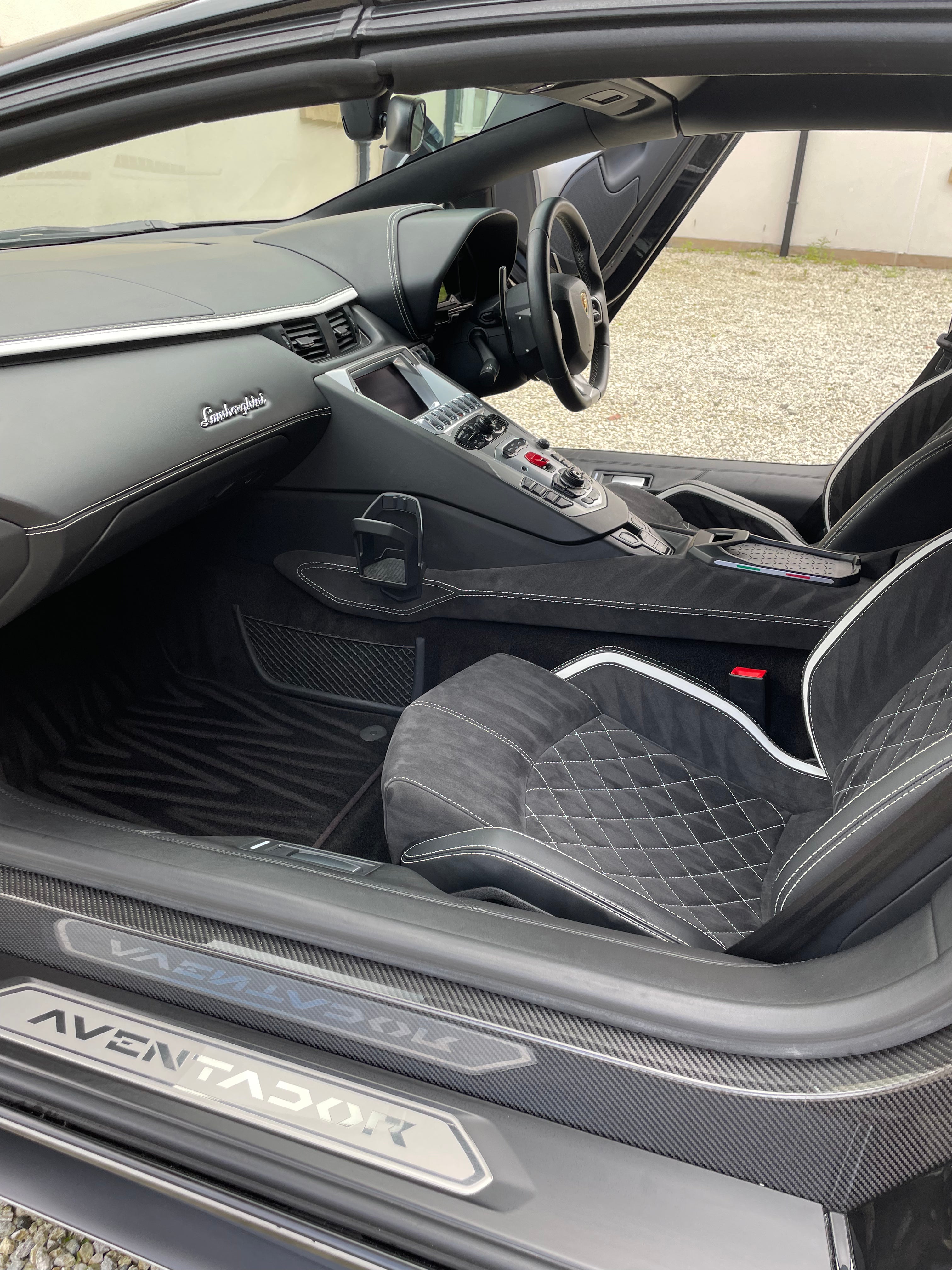
Our Process
One of the key principles of our interior detailing process is recognising not all surfaces are created equal. Delicate areas such as leather upholstery, dashboard buttons, and electronic screens demand a gentle touch. To address this, we use clean and soft detailing brushes specifically designed for delicate surfaces. These brushes are carefully selected to avoid scratching or damaging the intricate details of your car's interior.
Soft microfibre cloths are crucial in our detailing process. These cloths are not only gentle on surfaces but also adept at capturing and lifting away dust and grime. We use microfibre cloths for wiping down delicate areas, ensuring a streak-free finish that enhances the overall aesthetic appeal of your car's interior. More importantly, these cloths are dedicated to specific surfaces to prevent cross-contamination, upholding our commitment to maintaining the integrity of your vehicle's interior.
While a delicate touch is essential for certain areas, we understand that other parts of your car's interior may be subject to more substantial dirt and grime. For these tougher areas, we employ harder brushes that can effectively dislodge dirt without causing harm. The key here is using the right tools for the right surfaces. This meticulous approach allows us to achieve a thorough clean without compromising the integrity of your vehicle's interior.
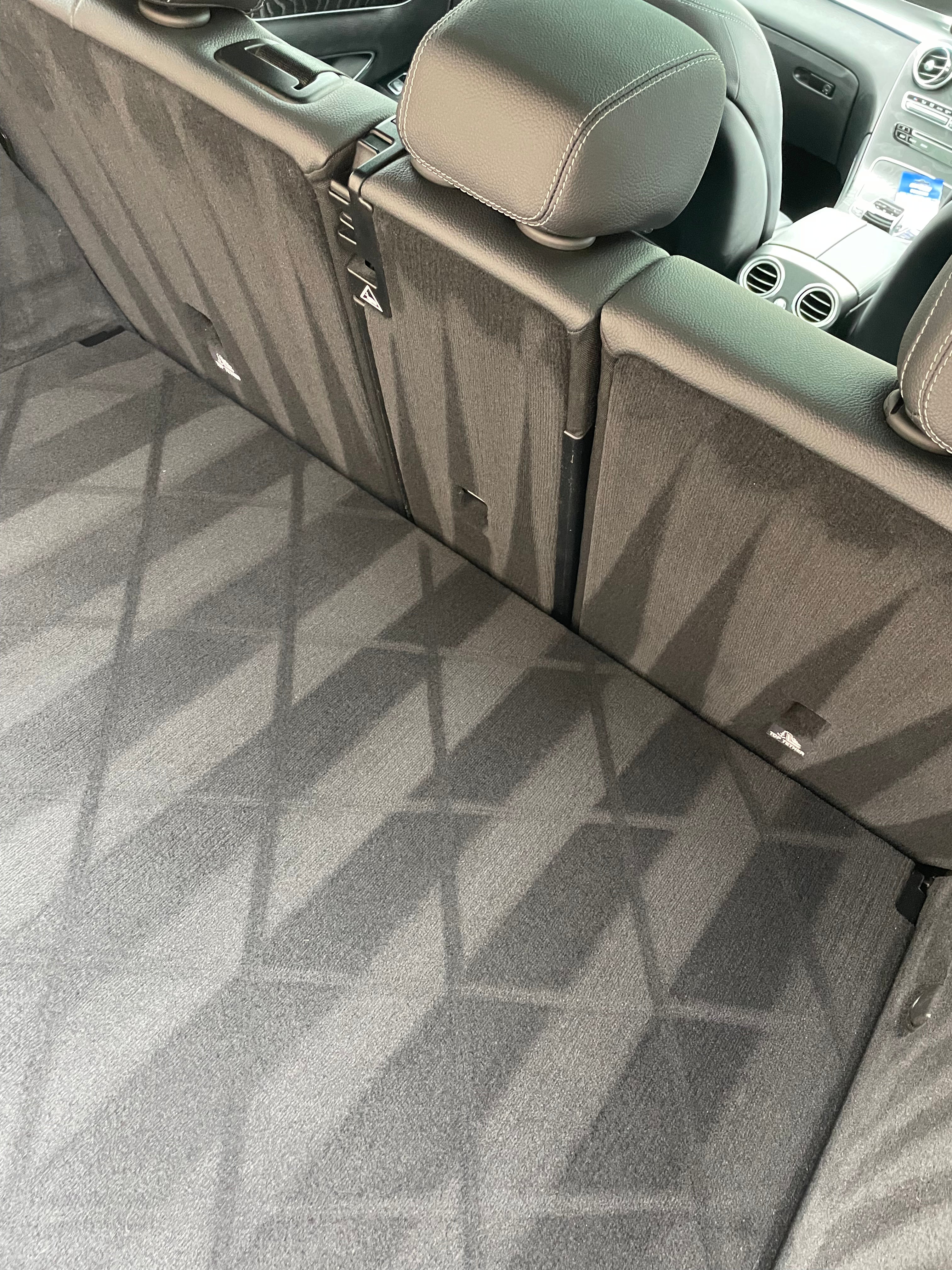
Cross-contamination
"Quick hoovers" and "mini valets" often prioritise speed and efficiency over the meticulous care needed to prevent surface-to-surface transfer of contaminants. Whether it's a cloth used on dirty pedals followed by an attempt to clean the touch screen, or the same brushes for the delicate areas as heavily soiled, the risk of transferring dirt and particles between surfaces is high. This lack of attention to detail can result in a less-than-ideal clean and potential damage to various parts of your vehicle.
Cross-contamination is a risk that we avoid through the use of dedicated cloths and brushes. Each cloth and brush is assigned to a specific type of surface or area, ensuring that no residue from one part of the car inadvertently ends up on another. This level of detail may seem small, but it makes a significant difference in maintaining the pristine condition of your car's interior.
Chemicals
The affordability of cheap car care services often comes at the expense of quality cleaning products. Some quick hoovers and mini valets may use generic or harsh chemicals that are not suitable for all surfaces. This can lead to residue buildup, discoloration, and even degradation of materials over time. The use of inappropriate cleaning agents not only compromises the cleanliness of your vehicle but also raises concerns about the potential impact on your health and safety.
Chemicals play a crucial role in the detailing process, and we prioritise the use of safe and gentle products to protect your car's interior. Our cleaning solutions are carefully chosen to be effective yet non-abrasive, preventing any damage to sensitive materials. From leather conditioners to plastic cleaners, every chemical used is selected with the utmost consideration for your vehicle's well-being.
In addition to using safe chemicals, our detailing methods are designed to safeguard your vehicle's interior. We avoid excessive water usage, preventing potential damage to electronic components and ensure the detailing process is eco-friendly. Our team is trained to employ techniques that minimize the risk of damage, leaving your car looking immaculate without compromise.
Our dedication to using safe chemicals and cleaning methods reflects our understanding of the importance of preserving your vehicle's interior for the long term. When you entrust your car to us, you're not just getting a cleaning service – you're getting a meticulous and artful detailing experience.
